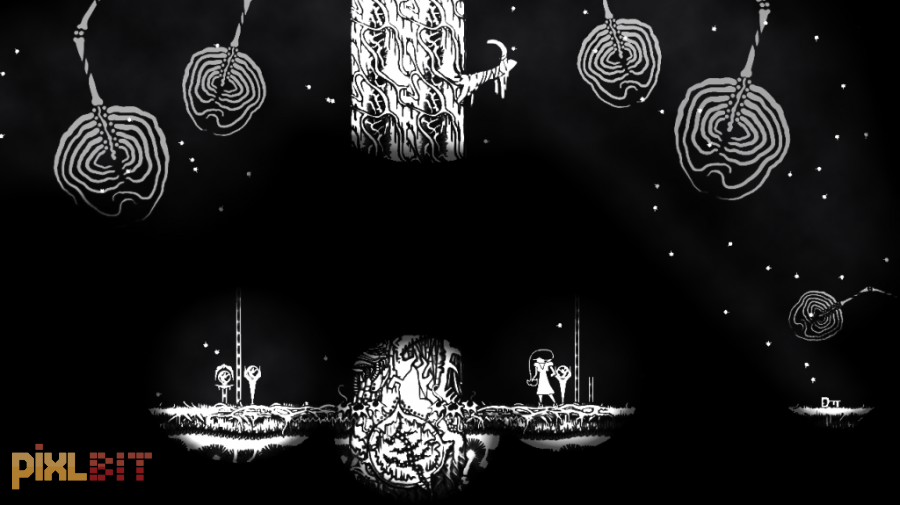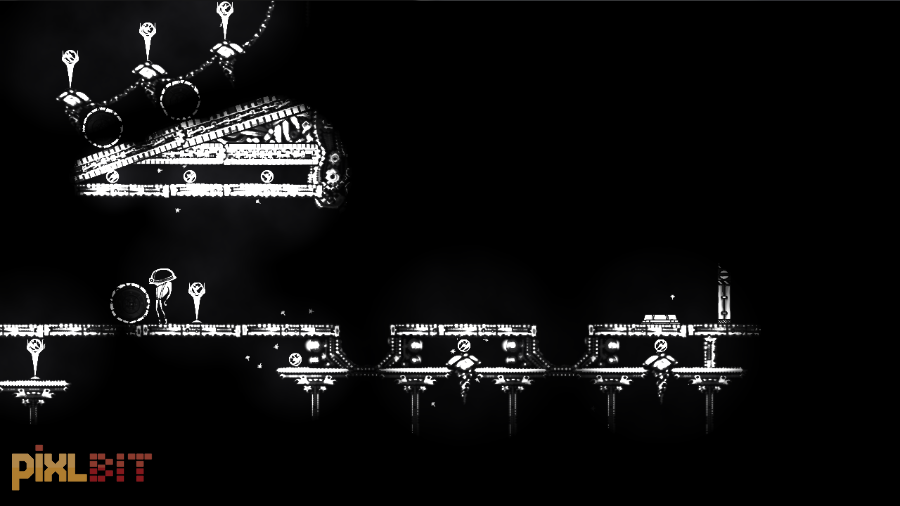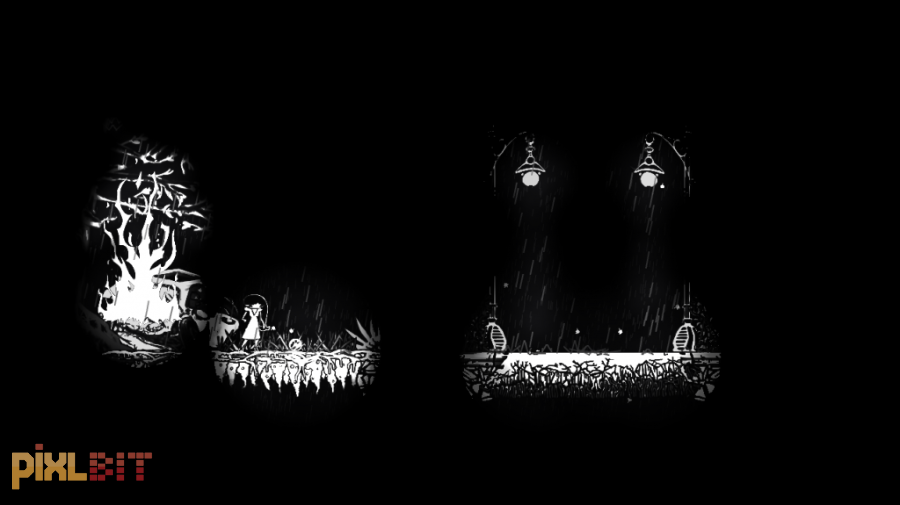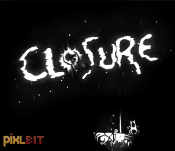Closure Review
|
|
See PixlBit's Review Policies

On 05/05/2012 at 05:27 PM by Patrick Kijek Getting stuck in this darkness will break you down with glimpses of scary hospitals, factories and circuses (oh my). |

Treat yourself to a gem of an experience as you let the possible solutions to these puzzles afflict your subconscious in a game of leapfrog between light and night.
Closure has been haunting gamers since its release, and it’s easy to see why. A two dimensional, monochromatic platformer almost entirely shrouded in darkness, this game has the ability to teach all of its players how to see the light.
The only way to progress throughout Closure is to light your way with flashlights from the beginning to the end of each level. Every source of light in the environment will have to be discovered and manipulated to reveal a safe path to victory. Every obstacle in this game will come due to the player’s inability to tweak flashlights in factories, forests and carnivals. The challenge is always the same, yet Eyebrow Interactive consistently finds new ways to enlighten the player. Just when you think you’ve mastered how to progress, an introduction to a new mechanic will throw another monkey wrench into these puzzles’ equations. One of the worlds presents the player with various barrels that have to be pushed into and onto heavy levers while staying illuminated (or they will disappear forever, into the darkness of the rest of the screen). Another tasks the player with blooming multiple flowers with searchlights mounted throughout the levels, so that the flowers’ petals can float into the exit and unlock it.
At the beginning of each world consisting of 24 levels, your four-legged avatar transforms into three isolated protagonists. You can become a miner with a hardhat for a face, a girl with pig tails lost in a forest, or another girl trapped in a carnival. All of the characters and important objects are white, while the backgrounds are completely black. Ironically, a game so filled with darkness only reveals each of these characters’ story through scenery. The player must illuminate what sense of closure each of these characters is attempting to fulfill through the different types of obstacles and backgrounds. Through it all, the objective is always to find and unlock the door to the next room through the darkness. As the levels progress with more mine shafts and barrels, deeper pools and flowers, the sense of escape from each of these characters’ purgatory can bloom. This synesthetic manner of telling the story through its setting emphasizes the importance of your surroundings. In addition, telling the story by showing rather than telling keeps the focus on the most important part of Closure at all times.
Interestingly enough, all three protagonists battle their unexplained histories, which can only give closure from speculating on what the scenery means. While progressing through the levels, the protagonists battle against darkness as the player battles with the same primal fear. Nothingness and the unknown can only be overcome with light, which the player must learn to harness. It can seem confusing to someone who hasn’t played the game, but no part of the story is developed through conventional mechanisms. Everything is open to interpretation through the scenery.
A variety of settings from mine shafts to cozy bedrooms need to be lit in just the correct way to escape their cages and move to the next level without any guidance. If you walk past your source of light, you’ll fall to your doom instantly. Falling into the abyss will recur enough to haunt your every move. The player will need to create chasms by lighting just enough area in the level, so as to not light the walls and other obstacles preventing the player from closure.
Simultaneously exhilarating and anxious, this limiting mechanic is essential to progress. Levels will sometimes require you to carry a key to the exit if the door is locked. Careful leapfrog -- dropping a key in front of your source of life and vice versa - while lighting your way to hopefully unlocking your path will leave your character on the precipice of the abyss at every turn. It’s as if a metaphor for life is staring your right in the face, throwing down just enough train tracks to chug a few steps before picking them up as the train keeps going. This mechanic keeps the player invested at every moment; it will force you to confront the primal fears of darkness and isolation. This solitude, so central to the single player experience, can be harrowing yet liberating when overcome.
Even though the developer has meticulously crafted each level, some of the platform placement occasionally creates an unwanted level of difficulty. Due to the small margin of error between jumps from one lighted area to another, some players might get testy and lose their patience. Yet this is essential to the challenge of a platformer at its most basic level. In some levels are rare, swaying moths to be collected for the game’s most prestigious achievement. These moths are sometimes very difficult to grab. Moths can only be collected after the player reveals one with his light and while the moth is illuminated. At the same time, the player must keep his path to safety illuminated when risking his life for these obscurely placed moths. On the other hand, some of the later levels can feel simple, due to easy level placement. For instance, later levels at the carnival could have been more challenging. Overall, both the platforming difficulty and moths will frustrate aggressive players. Nevertheless, patient players will be rewarded with peaceful progress.
Finally a game has come along where you can challenge your deepest problems when stuck with a locked door. Every stage has one of these doors for its goal, a symbol of hope for what lies ahead. During the time spent figuring out where to go and how to manipulate your surroundings to light the way, the minimalistic music will have an effective consequence on the player. Memories from your personal past will surely reveal themselves during the most trying of puzzles. Feeling this way might leave you anxious, yet you’ll grow as a gamer and as a person.
You might find it funny now how something so minuscule as a lightbulb can stand in for all of your troubles, yet that is where Closure’s synecdoche is most universal. Essentially, the lightbulb represents the player’s soul that still needs closure for itself. Because nothing is ever said about the origin or purpose to these objects and the characters’ surroundings, each player can fill in their meanings for themselves. These lightbulbs are not anything groundbreaking for the genre; nevertheless, the implementation is poignant and crucial to making Closure a game. No words or philosophies get in the way (as if it were a silent film) while players can experience the drama for themselves.
Rarely do such bold statements occur in video games, especially from the silent types. With entirely hand-painted graphics and hand-drawn animations, the game looks disturbingly beautiful in 720p at 60 fps. The only possible games that compare to Closure’s quality and beauty through a tight, packed experience must be Braid and Journey. Whereas a puzzler like Portal teaches many new mechanics only to cycle through another mechanic, Closure is like Braid or Journey because of its relentless use of one core mechanic. This is a great choice by the developer, since it effectively helps the player master the manipulation of light in darkness, as well as exploit this mechanic in any way imaginable. As we have been blessed with these experiences, we have been surprised with this title’s important indulgence into what drives a being through the most hopeless moments in life.













Comments